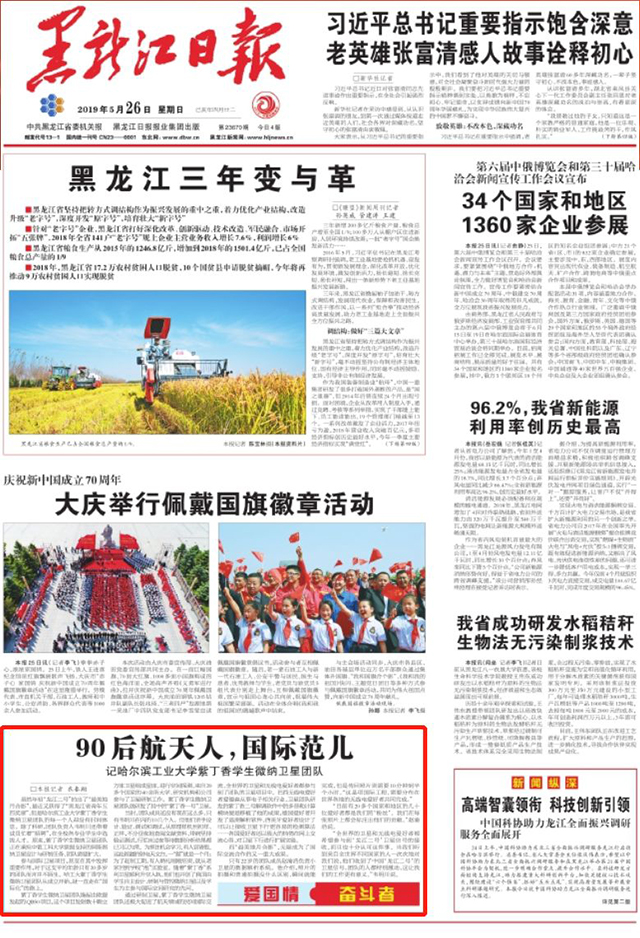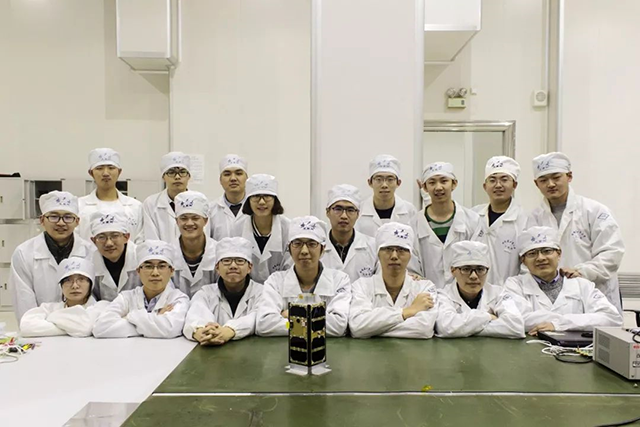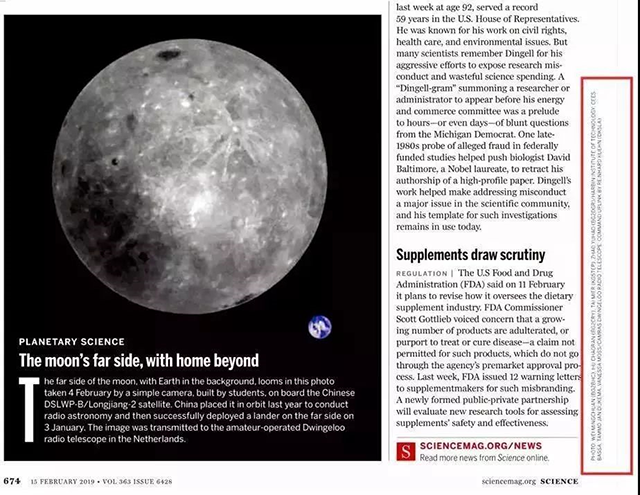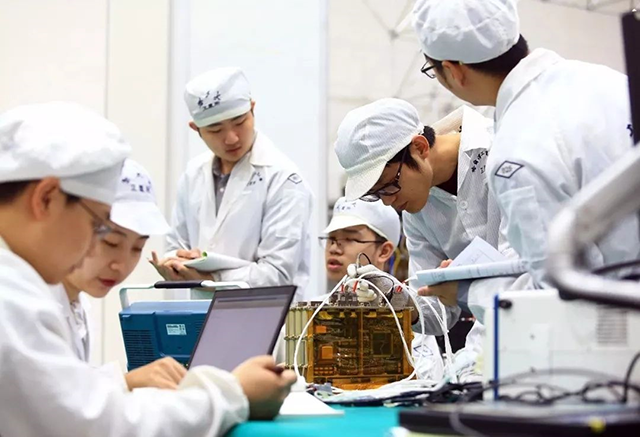Written by: YUE Hao
Translated by: DU Yufei
Edited by: William Mosteller
Date: 05-28
Reading Guide
It is not a novel thing for students in the HIT Lilac Satellite Team to participate in and even play an important role in international satellite projects, even though they are on average only in their early 20s. Since its founding, the team has been engaged in internationally cutting-edge studies. On May 26th, and 27th, the CCTV Russian channel reported on the team and Heilongjiang Daily featured the team on its front page due to their excellent achievements.

After the Lilac Satellite Team of HIT took the "most beautiful photo of the Moon and Earth" at the beginning of the year, they won the "May 4th Youth Medal of Heilongjiang Province". Behind the praise and honor is the conscientious dedication of each member of the team. Recently, in addition to scientific research, Wei Mingchuan, leader of the team, is also busy with the "recruitment" of talented students from different majors across the whole university. It turns out that the team needs to be expanded since it has undertaken the mission for the design and development of the ASRTU Nano-Satellite.
It is not a novel thing for students in the HIT Lilac Satellite Team to participate in and even play an important role in international satellite projects, although they are in their early 20s by average. Since its founding, the team has been engaged in internationally cutting-edge studies.
The Lilac Satellite Team of HIT originated from the European Union-sponsored QB50 project, which launched a constellation of dozens of cubic satellites for space exploration, involving more than 40 universities, research institutions, and companies from over 20 countries. Among the satellites, the Lilac I was developed by this team.

At that time, the team only had a little over 10 members, including Wei Mingchuan. However, even with few team members, they completed the design, verification, testing, and debugging of the principle prototype, the original prototype, and the normal prototype all by themselves. They grew accustomed to consulting references day and night, to insisting on the verification testing even when they were ill, and to spending the night in a camp bed waiting for the results of data analysis. Moreover, in order to grasp the opportunity to learn, someone once asked for leave to go to the Xinjiang Radio Observatory for as long as a month, and in order to finish tasks on time, another person devoted himself to studying in the laboratory as soon as he came back from his hometown just after his wedding. With the successful launching of the Lilac series satellites into orbit, the team has pioneered the independent design, development, and control of micro-and nano-satellites by Chinese students, as well as the participation of students in international space research.
Through the development of satellites, the team has also greatly promoted civil international exchanges in the field of aerospace. Satellite and radio enthusiasts all over the world have participated in the team's satellite projects. For example, Edison, a Brazilian radio enthusiast, is engaged in electronics-related industries. The Doppler calculation module in the Lilac II demodulation software developed by the team is transplanted from his achievements. Besides, enthusiasts from Germany and Spain has developed telemetry analysis software and designed detection algorithms that can make receiving satellites’ downlink easier. Moreover, enthusiasts from all over the world have also exchanged their experiences on the Internet with great enthusiasm and carried out extended experiments on satellite downlink.

In addition, " the most beautiful photo of the Moon and Earth " undoubtedly became another major achievement of international exchanges and cooperation.
Zhao Yuhao, a 22-year-old member, is responsible for the data analysis system of the small satellites. According to Zhao, the photos taken by the satellite can be completed in an instant like normal photos, but it takes 10 minutes to half an hour to send back the photos. He said, "this is an international project that needs the joint efforts of radio enthusiasts from all over the world."

“Currently, dozens of enthusiasts from more than 20 countries and regions are our fans. To show our gratitude, we have marked their contributions on every photo”, said Zhao Yuhao.
“Satellite and radio enthusiasts from all over the world are hoping to play a role in the reception of signals from the Longjiang II satellite since they agree with the significance of our studies. When we hear people from different countries all over the world tell us time and again that they have received the signal of China's Longjiang II satellite, we feel very excited, and it also makes our work more meaningful”, said Wei Mingchuan.


